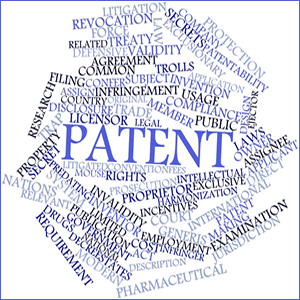Patent Litigation Concerns and Considerations
If you feel secure because your exclusive design contains unique and patented components, you may want to think again, according to APEX Electrical Interconnection Consultants.
 Patent infringement litigation is on the rise. A patent owner may view its intellectual property as a strategic asset. Although it has a limited lifespan, and may be challenged or even invalidated, companies can actively use patents to their advantage. By alleging infringement, the owner of a legitimate patent attempts to “harvest” added profits in the form of damage awards, royalties, reimbursement for lost revenue, increased market share, and other types of compensation, if they are successful.
Patent infringement litigation is on the rise. A patent owner may view its intellectual property as a strategic asset. Although it has a limited lifespan, and may be challenged or even invalidated, companies can actively use patents to their advantage. By alleging infringement, the owner of a legitimate patent attempts to “harvest” added profits in the form of damage awards, royalties, reimbursement for lost revenue, increased market share, and other types of compensation, if they are successful.
For example, the outcome of a recent patent infringement suit over smartphone technology resulted in a damage award of hundreds of millions of dollars. Verdicts in other patent infringement cases often have settlements of tens of millions of dollars. In addition, if a company is found guilty of “willfully” infringing on a patent, it may be subject to treble damage liabilities.
To a connector manufacturer, defending against such an infringement allegation can be costly, whether or not the issue escalates to a formal suit. Traditional royalty, licensing, or other fee arrangements may be worked out between companies. If an agreement cannot be reached and the issue becomes a suit, costs are likely to rise many-fold. Prosecuting a case in Federal court often necessitates the use of multiple law firms, expert witnesses, and attendant research, testing, travel, and other expenses.
Various defenses are available to a company accused of patent infringement, including challenging the accused patent claims and showing they are not legitimate (invalidity defense) or showing that its own design is truly different from the accused claims (non-infringement defense). Formal procedures and venues are available to mount these defenses. It is wise to obtain expert advice, including a solid technical opinion, before taking either of these actions.
A connector user also needs to be prepared, in the event a supplier is subject to a patent infringement suit. The end user does not have to be a direct party to a lawsuit for the event to affect its business, and not being adequately prepared for this scenario can be risky.
For example, a connector end user may be “indirectly” disrupted in the following ways:
- Supply restrictions: The supplier may not be permitted to produce, import, or manufacture components and as a result may not be able to fill existing orders.
- Use restrictions: As a customer, you may be barred from using the accused connectors, even if they are available.
- Price increases: Production efficiencies may be lost as the connector supplier implements design changes, and capacity may be restricted. Connector prices may be raised.
- Design changes: Your product design may need to change – including printed wiring boards, panel cutouts, tooling, wiring/harnesses – as a result of supplier changes.
- Inventory obsolescence: Parts may become obsolete or be recalled by the supplier, and you may have to dispose of, return, or otherwise deal with the unusable inventory.
- Product qualification: Plan on testing new/modified connectors and having your product re-qualified by end users and/or approval agencies.
- Traceability confusion: The risk of losing part traceability is higher during a transient event – finding a new supply source and phasing in new parts creates the potential for mixed inventories.
- Loss of supply: Worst-case scenario, the product and/or supplier may disappear if the case produces severe strains on the business.
In a litigious environment, the best advice is to be prepared, regardless of whether your company buys or sells connectors. As a patent owner or a manufacturer considering a patent application, be certain that the document is properly written, concise, and thorough. If it is vague or unclear, it can be subject to interpretation and may not hold up under scrutiny – patent claims can actually be wiped out. Seek advice from those experienced at patent writing, claims interpretation, researching similar documents, and making design judgments.
As a purchaser of connectors, take time to consider what may occur if a supplier is suddenly disrupted due to patent infringement allegations. Develop contingencies and alternatives to help maintain desired production output. Consider tapping independent advice via third-party experts early in the game.
Author Ron Locati has 31 years of connector industry experience primarily in engineering and R&D. He led both technical and marketing efforts at AMP, was director of engineering at Augat-LRC Electronics/Thomas & Betts, and served as vice president of product development at Stewart Connectors (Insilco). His experience spans wire-applied, board-mounted, military avionics, RF, cable TV, coax, fiber optic, telco/data, power, medical, and other connector products.
[hr]




